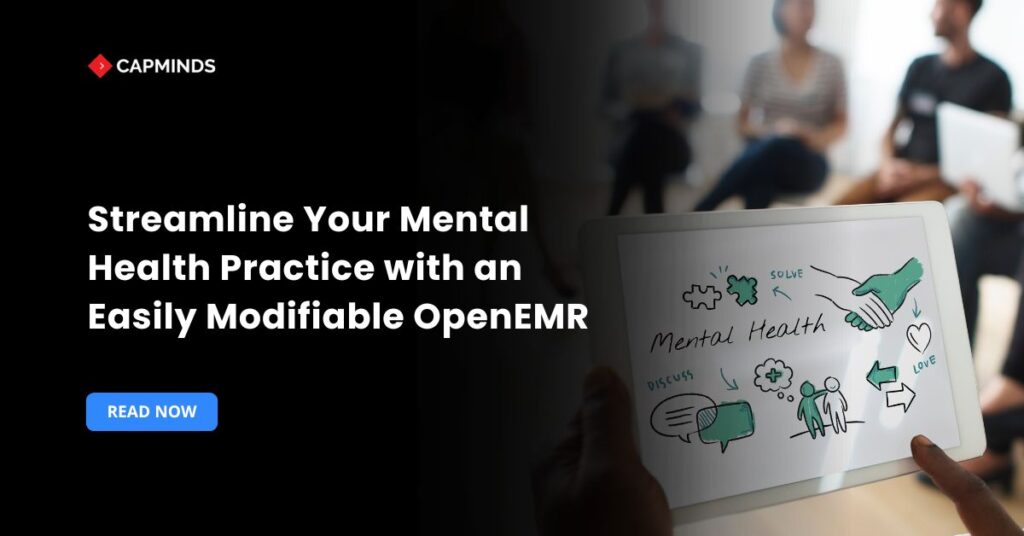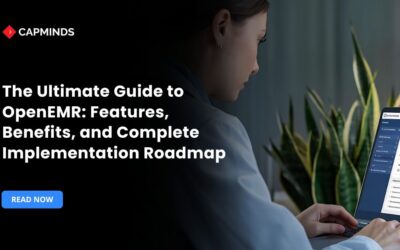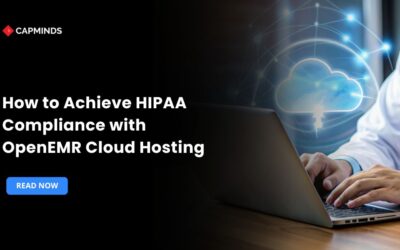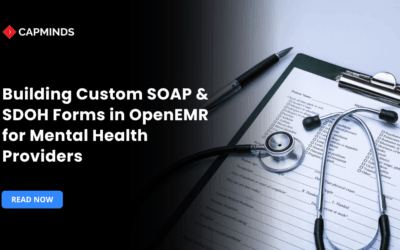Streamline Your Mental Health Practice with an Easily Modifiable OpenEMR
The demand for behavioral health services continues to climb, with tens of millions of Americans seeking care. Modern mental health practices in 2025 need EMR systems that support virtual care, data-sharing, and efficient workflows. For example, integration of telehealth has become essential – remote consultations now extend care to patients facing geographic or mobility barriers.
At the same time, AI and automation are transforming EHRs: a recent Philips report found over 43% of healthcare leaders have integrated AI solutions into care processes. OpenEMR, a free open-source EHR, has evolved to meet these needs by adding telehealth modules, FHIR-based interoperability, AI-powered tools, and mobile access for 2025 practice management.
Understanding OpenEMR for Mental Health Practices
- Open-source and widely adopted: OpenEMR is a free, web-based EHR platform used by thousands of healthcare providers. Its open-source nature means there are no licensing fees, making it cost-effective for practices of any size.
- Comprehensive core features: The system includes standard clinical and administrative modules – appointment scheduling, patient records, e-prescribing, billing, and patient portals. These built-in tools cover front-desk scheduling (including both in-person and virtual visits) and back-office billing and coding so that practices can manage all operations within one system.
- Modern enhancements: Recent OpenEMR versions (7.x) come with built-in telehealth and FHIR interoperability modules. For example, version 7.0.1 provides turnkey telehealth, SMS messaging, and billing claim modules. By supporting FHIR standards and other HL7 formats, OpenEMR makes exchanging data with labs, pharmacies, remote devices, and health information exchanges easier.
Customizing OpenEMR for Behavioral Health Workflows
- Tailored templates and forms: OpenEMR’s modular design lets mental health providers create or modify encounter forms, assessment tools, and treatment-plan templates that align with their specialty. Behavioral health clinics can configure intake questionnaires, depression screens, therapy notes, and outcome measures to match their clinical protocols.
- Specialty-specific workflows: Practices can adapt workflows and data fields to match counseling or psychiatric processes. For example, clinicians can track goals and progress notes or integrate standardized mental health screening instruments directly into the EHR. The system’s flexibility means you can enable only the modules (e.g, substance abuse forms, group therapy sessions) needed for your setting.
- Customizable UI and navigation: OpenEMR supports a modern, customizable user interface. Users can personalize dashboards by rearranging widgets, adding shortcuts or templates, and tailoring layouts for different roles. This lets behavioral health teams optimize the look and feel, for instance, putting therapy-related forms and reports front and center, without coding changes.
Related: The Top Features a Behavioral Health EHR Must Have
Modern Features and Benefits of OpenEMR
1. Enhanced Workflow Efficiency
- Automated scheduling and reminders: OpenEMR streamlines administrative tasks. Its built-in scheduler lets staff book appointments (in-person or virtual) and view provider availability in one place. Automated text/email reminders notify patients of upcoming visits, greatly reducing no-shows.
- Integrated billing and reporting: The system manages insurance claims and payments within the same platform, helping accelerate revenue cycle management. It also generates customizable reports (daily schedules, billing summaries, patient panels) so practices can monitor productivity and outcomes.
2. Telehealth and Virtual Care Integration
- Built-in video visits: OpenEMR 7.x includes a turnkey telehealth module. Providers can conduct secure video consultations and messaging without third-party tools. Virtual visits are documented in real time – clinicians update charts during the video session as they would in person.
- Seamless workflow: Telehealth encounters flow through the usual OpenEMR processes (note-taking, e-prescribing, billing), so virtual care is fully integrated. Third-party telehealth platforms can also be embedded via OpenEMR’s APIs if a practice prefers another video service. This flexibility ensures virtual care feels like a native part of the practice’s workflow.
3. AI-Enhanced Clinical Support
- Real-time alerts and reminders: OpenEMR now leverages AI for smarter decision support. AI-powered notifications flag potential drug interactions, allergies, lab abnormalities, or vital-sign trends that need attention. These targeted alerts help clinicians catch critical issues promptly. For example, the system may analyze a patient’s medications and labs to warn of a dangerous combination before prescribing.
- Preventive care intelligence: The platform uses AI to analyze patient histories and automatically recommend preventive screenings or follow-ups. Clinicians receive reminders for overdue vaccinations, cancer screenings, or routine check-ups based on each patient’s profile. This AI-driven preventive reminder system helps ensure timely care and can improve long-term outcomes.
- Documentation automation: Voice-to-text and AI-assisted note-writing tools reduce the documentation burden. Clinicians can dictate progress notes or use smart form-population to speed charting, allowing them to focus more on patient interaction than typing.
4. Interoperability and Data Exchange
- Standards support: OpenEMR adheres to interoperability standards (HL7, FHIR, CCD/C-CDA, etc.) so data can flow between systems. It supports both traditional formats and modern FHIR resources for maximum flexibility.
- Health Information Exchange (HIE) readiness: Using FHIR APIs, OpenEMR can share patient records across clinics, hospitals, labs, and registries. For example, a patient’s chart (medications, allergies, problems) can be transmitted to another provider’s system when needed. Remote monitoring data from patient devices (glucometers, wearables) can also be imported via FHIR to give a continuous care picture. This seamless data exchange promotes collaborative, coordinated care.
5. Mobile Accessibility and Remote Monitoring
- Responsive mobile access: OpenEMR’s web interface is fully mobile-friendly. Providers and staff can securely access schedules, charts, and messaging from smartphones or tablets anywhere with internet connectivity. This “EHR in your pocket” capability is vital for on-call providers and multi-site practices. Patients likewise use mobile apps and portal interfaces to view records or join telehealth visits.
- Remote patient engagement: Through the patient portal and connected devices, patients participate in their care. Vital signs or patient-reported data from home (blood pressure cuffs, mood trackers, etc.) can be fed into OpenEMR via FHIR, enabling remote monitoring. Clinicians can review this data alongside office visit information to adjust treatment plans as needed.
6. User Interface and Accessibility
- Modern UI improvements: Recent releases of OpenEMR have introduced numerous user interface enhancements. The interface has been streamlined for better navigation (new patient dashboards, cleaner forms, faster load times) and improved accessibility features (larger fonts, color contrast options). These updates make the system more intuitive for all users.
- Customizable layouts: Users can personalize screens and workflows. For example, a therapy group scheduler can have quick links to group notes, while intake coordinators see demographic and billing info first. OpenEMR allows rearranging widgets and adding shortcuts so each practice can tailor the interface to its workflow.
7. Security and Compliance
- Robust data protection: OpenEMR meets stringent security standards. It provides role-based access controls (ensuring staff see only permitted data), strong encryption (for data at rest and in transit), and detailed audit logs. These features safeguard patient privacy and help practices stay HIPAA-compliant.
- Regulatory compliance: The system is ONC-certified and regularly updated to keep pace with US healthcare regulations. Security and compliance features evolve with new requirements (e.g. CURES Act, cybersecurity guidelines). An active release process means patches and updates are routinely applied to protect against vulnerabilities.
Related: Custom EHR/EMR for Behavioral Health: A Complete Roadmap from Development to Implementation
Support and Community Resources
Being open-source, OpenEMR benefits from a vibrant global community. Dozens of vendors and consultants offer implementation, customization, and training services, while the community provides extensive free support.
Users can tap into the OpenEMR Wiki, forums, and user groups to find answers, share best practices, and download contributed modules. In addition, formal documentation and how-to guides are available online. This ecosystem of support, both community-driven and professional, helps practices successfully deploy and maintain OpenEMR.
CapMinds OpenEMR Customization and Integration Service
CapMinds OpenEMR equips clinicians with the best features and ways to integrate. It makes their workflows more efficient and filtered.
The integrated features will allow them to combine the ability of patient record management with conceptual and concurrent reminders.
This enhances the process of decision-making and improves patient care and quality.
- At CapMinds, OpenEMR custom solutions are developed with much care and accuracy to match the special practice needs.
- It will be low-cost and the perfect budget solution for your practice’s long-term future.
- CapMinds OpenEMR prioritizes secure data management & ensures compliance with industry regulations, offering healthcare providers peace of mind.
Get the best technologies and HIPAA-compliant and efficient OpenEMR from CapMinds that can be tailored to fit your practice.
Our OpenEMR services facilitate a Modern User Interface (UI), customization, production support, and training. They also facilitate billing, reporting, specialty enhancements, clearing house integrations, e-prescribing, and cloud services.
“Get the most experienced, proven, and perfect professional support for your OpenEMR.”




